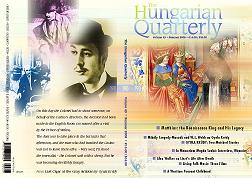A Lasting Legacy. Renaissance Art in Hungary (15th–17th Centuries)
A Lasting Legacy. Renaissance Art in Hungary (15th–17th Centuries)
Author(s): Árpád MikóSubject(s): Cultural history
Published by: Society of the Hungarian Quarterly
Summary/Abstract: The arrival and presence of the Italian Renaissance in Hungary is, to this day, associated in the popular mind with King Matthias. Scholars, whether Hungarian or not, are also in agreement. Yet the Italian Renaissance did not come to the royal court in Buda entirely without precursors. Here we should advert to less wellknown art objects rather than the early emergence of humanism in Hungary through Matthias Corvinus’s tutor, Bishop János Vitéz, and his nephew, Janus Pannonius, the latter being an important poet writing in Latin, who had received much of his schooling in Italy. Vitéz was not just a passionate reader of the writers of antiquity: he also commissioned splendid manuscripts from Florence. The Livy codices now in the Bavarian Staatsbibliothek, Munich, are among the finest extant examples of the kind of decoration with white interlaces called “bianchi girari”. Vitéz initiated much construction in Esztergom, his archiepiscopal seat (although not a trace of the Renaissance style is to be found in his own palace). There are, however, early traces of the Renaissance in the environs of other cultivated Hungarian prelates. It was certainly not mere chance that the first clearly carved roman lettering (otherwise known as Humanist capitals) known to us are in Veszprém, and specifically in the Gothic chapel built by Bishop Albert Vetési, in 1467. Prelates who had visited Italy there acquired objects of art and books and invited master craftsmen to Hungary, independently of Matthias and the royal court.
Journal: The Hungarian Quarterly
- Issue Year: 2008
- Issue No: 190
- Page Range: 68-78
- Page Count: 11
- Language: English

